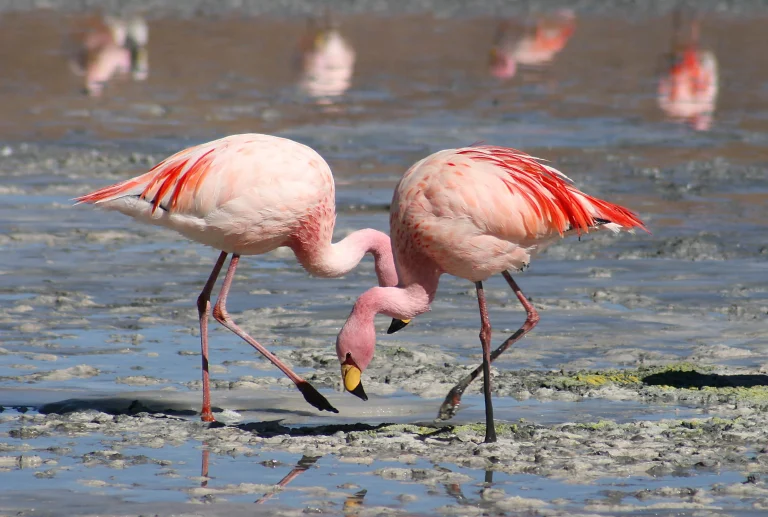In the intricate choreography of ecosystems, certain species emerge as architects, producing a profound influence that resonates far beyond their numerical abundance. Keystone species, as these ecological maestros are known, play a pivotal role in shaping the dynamics, biodiversity, and resilience of natural environments. This article embarks on How to Add Keystone Species in Concept Map?, as well as a comprehensive exploration of the multifaceted nature of keystone species, from their definition to their global significance, unveiling the interconnected threads that weave the intricate tapestry of Earth’s ecosystems.
Definition of Keystone Species
Keystone species are not mere inhabitants; they are architects. Defined by their disproportionate impact on ecosystem structure and function, these species hold a unique position, guiding the intricate dance of life within their realms. Their influence transcends mere population numbers, shaping the very essence of the ecosystems they inhabit.
How to Add Keystone Species in Concept Map
Ecosystem Dynamics
Ecosystems are not static paintings but dynamic compositions, ever-evolving through a symphony of natural events, climate patterns, and the intricate interactions among species. Ecosystem dynamics capture the fluidity of nature, illustrating how these environments adapt and change over time, driven by an intricate interplay of ecological factors. Key aspects of ecosystem dynamics include:
Biological Interactions
Ecosystems consist of a web of biological interactions, including predation, competition, symbiosis, and mutualism, among others. These interactions influence the distribution, abundance, and behavior of species within the ecosystem.
Energy Flow
Ecosystem dynamics involve energy flow through the food web, starting with primary producers (plants or algae) converting sunlight into chemical energy through photosynthesis. Consumers, including herbivores and carnivores, then transfer and utilize this energy as they consume other organisms.

Nutrient Cycling
Nutrient cycling is a fundamental aspect of ecosystem dynamics, involving the movement and recycling of essential nutrients (such as carbon, nitrogen, and phosphorus) among living organisms, the soil, and the atmosphere. Decomposers play a critical role in breaking down organic matter and releasing nutrients into the ecosystem.

Succession
Ecosystems undergo dynamic changes over time through a process called ecological succession. Primary succession occurs in areas where no previous life existed, while secondary succession occurs in areas where a disturbance (e.g., fire, or human activity) has disrupted the existing community.
Biodiversity Maintenance
Within the vast tapestry of biodiversity, keystone species emerge as guardians. Their role in regulating the abundance of other species becomes crucial for maintaining a diverse and resilient ecosystem. Like skilled conductors, they ensure that no single species dominates, fostering a harmonious balance that contributes to overall ecological health.
Ecosystem Stability
Biodiversity contributes to the stability of ecosystems by providing a range of species with diverse ecological roles. Diverse ecosystems are often more resilient in the face of environmental changes, disturbances, or the introduction of new species.
Genetic Diversity
Within populations of individual species, genetic diversity is essential for adaptation to changing environmental conditions. Genetic diversity helps populations withstand diseases, pests, and environmental stressors, contributing to long-term species survival.
Species Diversity
Maintaining a variety of species within an ecosystem enhances its overall biodiversity. Different species play unique roles in nutrient cycling, energy flow, and ecological processes, contributing to the health and functionality of the ecosystem.
Ecosystem Services
Biodiversity is closely linked to the provision of ecosystem services, including clean air and water, pollination of crops, regulation of pests and diseases, and climate regulation. Healthy ecosystems with high biodiversity provide a wide array of services that are essential for human well-being.
Top-Down Regulation
Trophic hierarchies find balance through top-down regulation, a phenomenon orchestrated by keystone species. Predators at the apex of the food chain wield trophic authority, preventing unchecked growth of prey species and maintaining equilibrium in the complex web of ecological interactions.
Predator-Prey Relationships
Top-down regulation involves the interactions between predators and their prey within an ecosystem. Predators exert control over the abundance of prey species by consuming them, which, in turn, influences the entire trophic structure.
Troop Cascades
The effects of top-down regulation often lead to trophic cascades, where changes in the abundance or behavior of predators have cascading effects throughout the trophic levels of an ecosystem.
For example, if predators are removed, the population of their prey may increase, affecting the abundance of the prey’s food source and so on.
Biodiversity Maintenance
Top-down regulation is important for maintaining biodiversity within an ecosystem. Predators help prevent the dominance of certain species by regulating their populations, thereby promoting a more diverse community of species.
Herbivore Control
Predators at higher trophic levels, often carnivores or top-level predators, control the populations of herbivores. This control prevents overgrazing by herbivores, ensuring the health of vegetation and contributing to overall ecosystem balance.
Example Keystone Species
The saga of gray wolves in Yellowstone National Park unfolds as a compelling example of keystone species in action. The reintroduction of these apex predators set off a trophic cascade, a ripple effect that rejuvenated the entire ecosystem. From vegetation to river courses, the influence of keystone species resonated across multiple ecological levels.
Trophic Cascades
Trophic cascades, the domino effect triggered by top-level species changes, showcase species’ intricate interdependence within ecosystems. Keystone species, as initiators of trophic cascades, exemplify how their presence or absence can send ripples through the trophic levels, shaping the landscape in unforeseen ways.
Top-Down Regulation
Trophic cascades are a form of top-down regulation, where changes in the abundance of organisms at higher trophic levels impact the abundance or behavior of organisms at lower trophic levels.
Predator-Prey Dynamics
The presence or absence of top predators affects the population of herbivores and, subsequently, the vegetation they consume. This, in turn, affects the next trophic level.
Herbivore Impact on Vegetation
In the absence of top predators, herbivore populations may increase unchecked, leading to overgrazing or overbrowsing of vegetation.
Habitat Modification
Keystone species, akin to landscape architects, sculpt their habitats through various activities. From beaver dams altering water courses to bird species creating nesting sites, these modifications redefine the physical structure of ecosystems, influencing the lives of fellow inhabitants. Key points related to habitat modification include:
Land Use Changes
Habitat modification often involves changes in land use, such as urbanization, agriculture, deforestation, and infrastructure development. Conversion of natural habitats into agricultural fields, urban areas, or industrial zones is a common form of habitat modification.
Fragmentation
Habitat modification can lead to habitat fragmentation, where large, continuous natural areas are broken into smaller, isolated patches. Fragmentation can disrupt ecological processes, reduce genetic diversity, and increase the vulnerability of species to extinction.
Ecosystem Services
The contributions of keystone species extend beyond ecological intricacies to tangible benefits for humanity. Ecosystem services, ranging from habitat provision to pollination and pest control, showcase how keystone species contribute to the well-being of human societies.
Human Impact
As humanity leaves its mark on the planet, keystone species often find themselves caught in the crossfire. Habitat destruction, pollution, and climate change pose threats to these vital organisms, leading to cascading effects on biodiversity and ecosystem stability.
Habitat Destruction
Human activities, such as deforestation, urbanization, and agricultural expansion, result in the direct destruction and fragmentation of natural habitats. Habitat destruction is a leading cause of biodiversity loss and ecosystem degradation.
Pollution
Pollution from industrial, agricultural, and domestic sources introduces contaminants into air, water, and soil. Types of pollution include air pollution, water pollution, soil contamination, and the release of hazardous substances.
Climate Change
Human activities, particularly the burning of fossil fuels, deforestation, and industrial processes, contribute to the accumulation of greenhouse gases in the atmosphere. Climate change leads to altered weather patterns, rising temperatures, sea level rise, and other environmental impacts.
Over-Exploitation of Resources
Unsustainable extraction of natural resources, such as overfishing, deforestation, and excessive water extraction, depletes ecosystems and threatens the survival of many species. Over-exploitation can lead to ecosystem collapse and loss of biodiversity.
Restoration Ecology
In the pursuit of healing wounded ecosystems, restoration ecology takes center stage. Keystone species emerge as linchpins in these efforts, guiding successful restoration by reintroducing key players that can initiate positive cascades, aiding in the recovery of ecosystems.
Global Significance
Keystone species transcend geopolitical boundaries; their significance is global. Recognizing their importance becomes imperative for international conservation efforts. These species contribute to the resilience and sustainability of ecosystems worldwide, emphasizing the need for collaborative, global initiatives.
Interactive Concept Map
As a visual guide, the interactive concept map encapsulates the intricate relationships between keystone species, trophic cascades, habitat modification, and their global significance. Users can navigate through this dynamic visualization, gaining a deeper understanding of the interconnected nature of these ecological concepts.
Ecosystem Services (Central Node)
Provisioning Services
- Food (e.g., crops, livestock, fish)
- Water (e.g., purification, supply)
- Raw Materials (e.g., wood, fibers)
- Medicine (e.g., natural compounds)
Regulating Services
Climate Regulation
- Carbon Sequestration
- Temperature Regulation
Water Purification
Disease Regulation
Natural Disaster Mitigation
Supporting Services
- Nutrient Cycling
- Soil Formation
- Habitat for Species (e.g., biodiversity)
- Pollination (e.g., bees, butterflies)
Cultural Services
- Aesthetic and Inspirational Values
- Recreation and Tourism
- Cultural Heritage
- Educational and Scientific Values
Human Well-Being
- Nutrition and Food Security
- Health Benefits (e.g., clean air, water)
- Quality of Life
- Cultural and Recreational Experiences
Threats to Ecosystem Services
- Habitat Destruction
- Pollution (e.g., air, water, soil)
- Climate Change
- Over-Exploitation of Resources
- Invasive Species
Conservation Strategies
- Sustainable Resource Management
- Habitat Restoration
- Protected Areas and Reserves
- Climate Change Mitigation
- Community Engagement
Global Initiatives
- Convention on Biological Diversity (CBD)
- Sustainable Development Goals (SDGs)
- Bonn Challenge (Forest Landscape Restoration)
- International Collaboration for Conservation
Monitoring and Assessment
- Ecosystem Health Indicators
- Biodiversity Monitoring
- Remote Sensing Technologies
- Citizen Science
Conclusion
In the intricate tapestry of nature, keystone species stand as pillars, shaping ecosystems and orchestrating a delicate symphony of life. As we traverse the realms of definition, ecosystem dynamics, biodiversity maintenance, and global significance, the profound influence of these ecological architects becomes abundantly clear.
Keystone species, with their disproportionate impact, not only regulate trophic hierarchies but also serve as stewards of biodiversity. Their significance echoes across landscapes and reverberates through the intricate dance of trophic cascades, leaving an indelible mark on the very fabric of ecosystems.
Through the example of gray wolves in Yellowstone National Park, we witness the transformative power of keystone species, initiating a cascade that breathed life into the environment. Trophic interactions, habitat modifications, and the provision of crucial ecosystem services underscore their multifaceted roles in sustaining life.
As humanity’s footprint expands, keystone species find themselves at the intersection of progress and conservation. The threats posed by habitat modification, pollution, and climate change cast a shadow on these vital players, emphasizing the urgent need for concerted global efforts in their preservation.
Restoration ecology emerges as a beacon of hope, acknowledging the pivotal role of keystone species in ecosystem recovery. By recognizing their global significance and incorporating conservation strategies, we can strive towards a harmonious coexistence with the planet we call home.
In conclusion, the narrative of keystone species is one of resilience, interdependence, and the enduring legacy they leave on the landscapes they inhabit. As we traverse the delicate balance of Earth’s ecosystems, let us strive to be mindful stewards, recognizing and preserving the architects that ensure the harmony of our shared natural heritage. In their continued presence, we find the key to sustaining the intricate dance of life on our planet.
For More Informative Articles, Keep Visiting Formal Words







